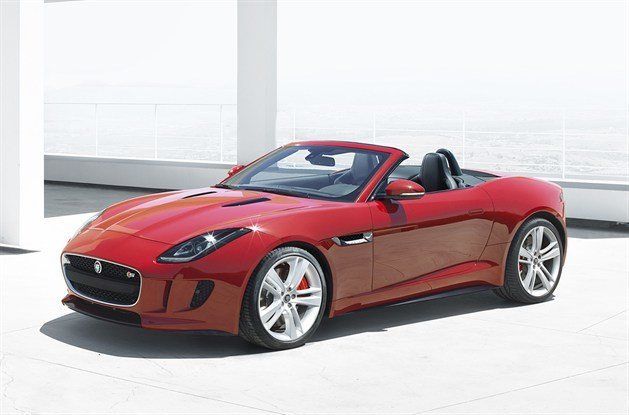Jaguar XF 3.0D
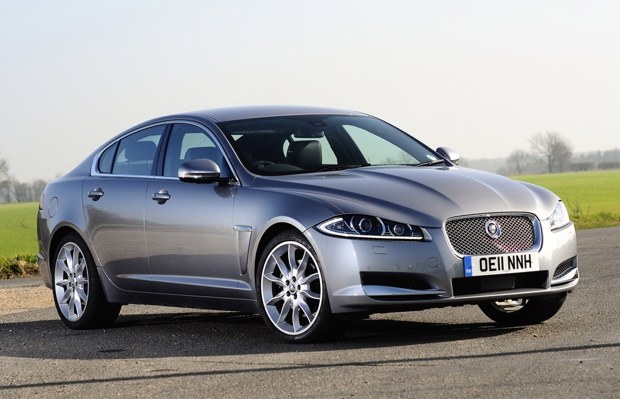
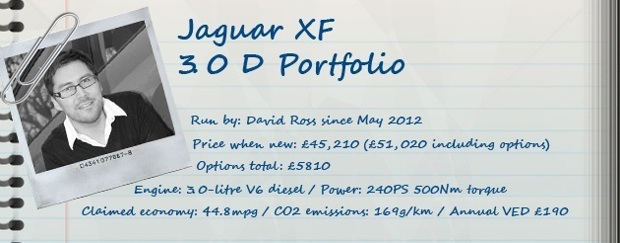
- Our new arrival - the Jaguar XF
- Standing out from the crowd
- Facelifting me higher: The updated XF
- Making a good first impression
- My favourite XF extras
- Time for the XF's first service
- Summer finally arrives
- Back to the motorway...
- A touch of screen annoyance
- Diesel downsizing in the XF
- It's goodbye to our impressive XF
- An image problem?
Our new arrival - the Jaguar XF
While we were sad to see our Audi A6 go the disappointment hasn't lasted too long as we welcome the impressive Jaguar XF.

Date: 4 May 2012 | Current mileage: 7398 | Claimed economy: 74.3mpg | Actual economy: 55.9mpg
With the departure of the Audi A6 there was a big saloon shaped hole in my life for a while. But fortunately it's been filled with another equally good looking (and equally grey) saloon in the form of the Jaguar XF. This is one car we've been aiming to have in the Our Cars section for a while now so it's great to be able to have it on board.
The XF was facelifted last year and it's the new and improved model we have here with its sharper front end. I'm still not sure whether I prefer the redesigned model as I was a big fan of the original XF with its smooth, flowing lines. Even though this new one has come along I don't think it's dated the pre-facelifted model in the slightest. I'll be going into the changes more in detail in the next update,
We've gone for an XF 3.0 D but not chosen the top S version. Instead ours is the standard 3.0-litre diesel engine with 240PS and 500Nm of torque. The more powerful S model has 275PS and 600Nm of torque but that's not to say ours is the poor relation in any way. It is still plenty powerful enough with a 0-62mph time of 7.1 seconds. The 3.0 D S does the same speed in 6.4 seconds.
Not that it's the kind of car you'd be racing away from the lights in but it gives you an indication of performance. A better barometer is the fact our XF can accelerate from 50mph to 70mph in just 3.7 seconds. This kind of performance is far more useful in everyday driving. Especially my kind of driving which is mainly motorways and dual carriageways.
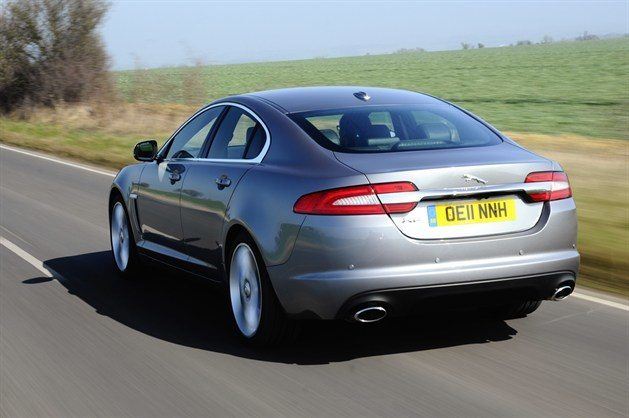
The top engines in the XF range remain the monster 5.0 V8 with the XFR getting a supercharged version with 510PS. It's very quick as you'd imagine and a great car. However the sensible option for most is the new 2.2-litre diesel which comes in two different versions - one with 190PS and another with 163PS. The latter is really for company car drivers as its lower list price of £29,950 and lower CO2 emissions make it an option where previously it may have been out of reach. You can see a full list of all the engines and prices in the data section of our XF review.
And what about economy? Well the official figures say the XF 3.0 D should be averaging 44.8mpg (interestingly the more powerful D S model does exactly the same figure such are the oddities of the official EU fuel tests). CO2 emissions are 169g/km which puts it in band H for car tax - currently £195 a year. We'll be keeping a close eye on economy to see if it reflects what fellow XF owners are seeing on our Real MPG tool. The real average here is 34.5mpg so some way short.
Our XF is a top of the range Portfolio model. There are two other trim levels on the 3.0 D model - Luxury and Premium Luxury but we've chosen the version with all the toys. It's not cheap of course with an on the road price of £45,210 and that's without options but it does come with a lot of standard kit.
This includes the top of the range Bowers and Wilkins 17-speaker sound system, heated and ventilated leather seats, Suedecloth headlining and premium carpet mats. That's on top of the standard equipment including the infotainment system. Nearly all Jaguar XF models come with sat nav (the exception is the SE trim that only comes with the 2.2-litre diesel) which includes a colour touchscreen to control it. Plus there's Bluetooth, DAB digital radio and an iPod connector.
Standing out from the crowd
Thanks to some unique details the XF has carved its own path when it comes to style and manages to stand out from other executive cars.
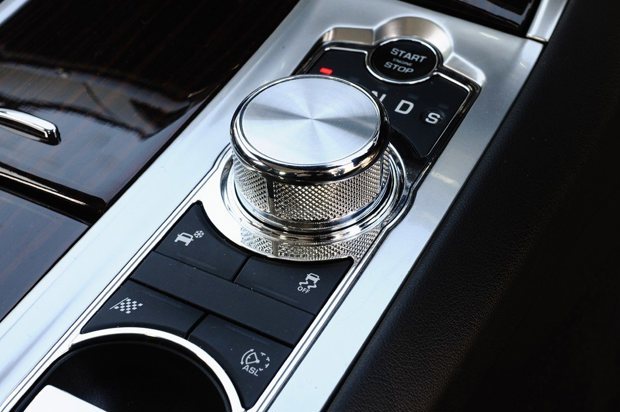
Date: 25 May 2012 | Current mileage: 8011 | Claimed economy: 44.8mpg | Actual economy: 37.1mpg
It's not always easy to be different. Especially in the world of car design. The majority of people might appreciate something offbeat but when it comes to actually parting with their own money they are more likely to play it safe and stick to what they know. And when it comes to the world of executive saloons, that's certainly true.
The German trio of the Audi A6, BMW 5 Series and the Mercedes-Benz E-Class dominate this market but you'd hardly say any was especially daring in design. The 5 Series has perhaps done the most to add a dash of style, particularly the previous generation version from 2003.
So when Jaguar launched the XF it was clear that it needed to offer something different to the existing saloons. Whether it does that in terms of exterior styling tends to divide opinion. I personally like the looks but I know several people who don't think it looks like a Jaguar should. Others say it's too generic and similar in profile to something like a Lexus GS. The front is distinctive though, thanks to the large grille dominated by that Jaguar badge and there are nice touches like the chrome runner the front wing imprinted with the 'Jaguar' name.
But where it really stands out is inside. The interior of the XF is unlike any other and it makes the Jaguar feel that bit more special than other saloons this size. The quality is, as you'd expect, second to none with a top notch feel to all the controls and switches. My only criticism is the indicator and wiper stalks which don't feel as good as the rest of the interior and seem a bit dated.
Throughout the rest of the interior there's great attention to detail and some lovely touches that mark the XF as something with a very British flavour to it. The big difference from other cars is the gear selector. Instead of a traditional lever the XF has a metal dial that slowly rises out of the dash when you start the car. It's a lovely solid metal dial too and adds to the luxury feel of the Jaguar. Just above it is the engine start button which pulses red before you press it, echoing the rhythm of a heartbeat.
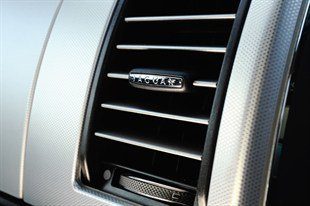
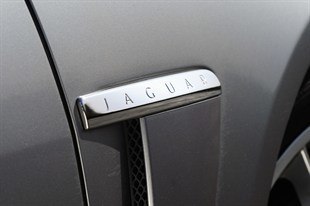
Starting the car also sees the air vents rotate open. It's what Jaguar calls the 'visual ballet' of the XF and it certainly impresses friends who have never sat in an XF before. I've had several people describe it as 'special' which sums up the Jaguar perfectly. This is no run of the mill saloon. Other quality touches include the leather dash top with its contrasting stitching.
The metal gear selector means the central console is nice and simple, even though there are still plenty of buttons. It's helped by the high gloss wood finish which creates a nice flat and uncluttered surface. However one thing I have noticed is that bright sunshine can reflect off the top of the gear selector which can be annoying.
The XF certainly has plenty of character and it's very different in feel to the Audi A6 I previously had. The Jaguar may not look as aggressive or as sporty as the Audi but so far it's winning me over with its charisma and style. Plenty of other drivers do seem surprised to see someone in their mid 30s driving a big Jaguar - a car that traditionally has had a bit of an old fashioned image - but the XF is as modern as anything else out there and happily stands out from the crowd.
Facelifting me higher: The updated XF
Jaguar revised the XF saloon last year with some significant changes both to the outside and the interior. So what's new?
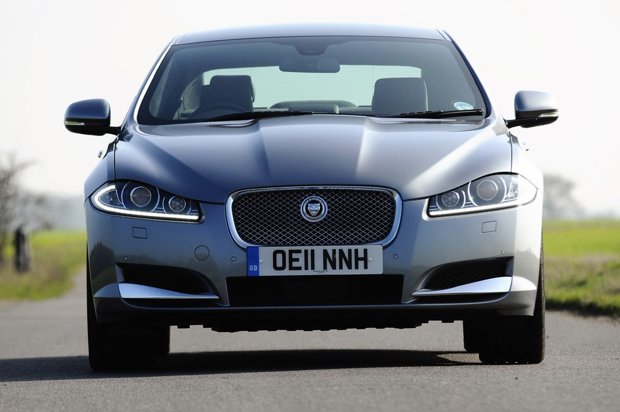
Date: 11 June 2012 | Current mileage: 8678 | Claimed economy: 44.8mpg | Actual economy: 36.2mpg
The XF caused quite a stir when it was first launched in 2008, particularly in the UK where we always love a Jaguar. The distinctive look, both outside and in, got a very positive response from the critics and it proved a popular seller too. Since I've been driving an XF I've noticed just how many there are on the roads and I still think it's a great looking car.
So facelifting something that's been so acclaimed is always tricky. The last thing you want to do is mess up the looks and put people off. Whether you like the redesigned XF is of course a matter of personal taste but the styling changes at the front did bring it into line with the big XJ. You can probably expect to see a similar look on the next XK which should give the Jaguar line-up a bit more of a family feel.
So what exactly were the changes? Well as you can see in the pictures, the big changes at the front are dominated by the headlights. The revised car now has xenon headlights with LED daytime running lights in a distinctive 'J' shape which curl around the outer edge, rather than sitting in the lower bumper as before. There is also a new bonnet, front wings and a new triangular side vents. The bumpers are a bit sharper too to add to the more aggresive appearance.
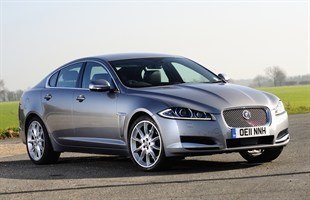
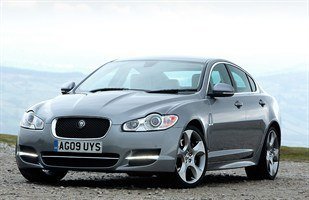
Round the back the changes are more subtle. There are slightly different rear lights which are larger and have full LED lights including the brake and indicator lights. The chrome strip that runs across the boot has a gloss black section on the lower half to make it look thinner and no longer has 'Jaguar' written across it. Usefully all models get power closing on the boot so you don't have to slam it shut. Don't mistake this for an electric boot - you still have to close it by hand, but it means you can just gently shut it and it will electrically pull the boot down into the lock position.
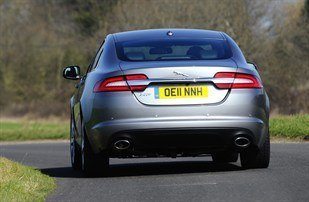
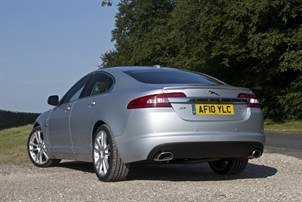
So what about the inside? Well there are new seats with a 'hoop' design that actually improves support plus there are now more colour and veneer choices than before. Our car has the black Suedecloth headlining which is similar to Alcantara and looks great.
The switches and buttons on the dash have been slightly redesigned and are now black rather than silver. It may not look quite as slick but the quality feels better. There are also extra switches below the touchscreen which makes it easier to switch between functions.
Other less obvious but useful changes include a new polarising filter on the main touchscreen for better contrast in bright sunshine. The main driver instrument cluster is now a full-colour TFT display with better resolution and clarity. As our car is the top of the range Portfolio model it also gets the Bowers & Wilkins sound system. The name may not be as well known as Bang & Olufsen or Bose, but in terms of sound quality it's more than a match.
What's good to see is that Jaguar seems to have taken feedback from XF owners on board and all the changes are useful rather than merely changes for the sake of it it. Admittedly not everyone likes the new front end but it does at least now tie in the XF and XJ and certainly gives it a more purposeful look when viewed head on.
One month in and I'm starting to like the Jaguar more and more with each journey. And it's a car that still gets attention. I've seen a few people admiring it when it's been parked up and I personally love the looks. But it's really impressive inside. Covering long distances is never a chore in the XF and it's a car that's really set up for the driver. So far so good!
Making a good first impression
I've been driving the XF for two months now and while racking up the miles it's proved to be a mightily impressive luxury saloon.
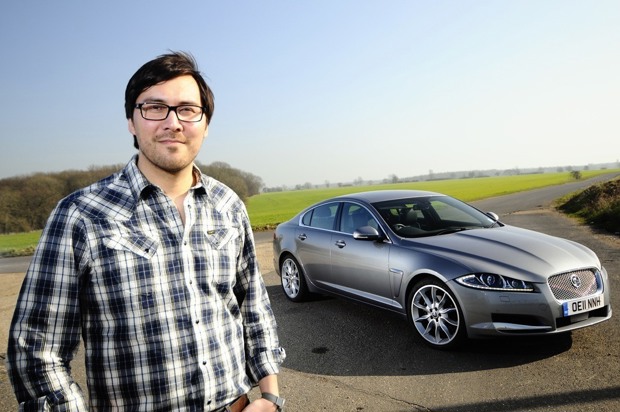
Date: 27 June 2012 | Current mileage: 9655 | Claimed economy: 44.8mpg | Actual economy: 36.4mpg
It's been almost two months since our Jaguar arrived and the time has flown by. Much of that is down to the sheer number of new car launches I've been fortunate enough to go on recently, both here and abroad. Not that I'm complaining but it's fair to say I've seen more of Heathrow airport security than is healthy for a normal human being.
So it's always lovely to get back behind the wheel of the XF. It certainly softens the blow of having to sit in rush hour traffic on the M25. The serene cabin and those lovely leather seats instantly relax you. That and the optional Digital TV that's fitted to my car (a £700 option) make traffic jams quite enjoyable. Well as enjoyable as they can be.
It did take a few days for me and the Jag to get used to each other. After swapping out of the Audi A6 I was running before, straight into the XF gave me a great opportunity to see how different they are. What surprised me initially was how unresponsive the XF felt compared to the Audi. Despite having an identical 500Nm of torque and pretty much the same power give or take 5PS, the XF didn't seem as fast, particularly when accelerating onto motorways or dual carriageways.
Now I'm not the most demanding driver but it's fair to say I do like to get a move on when I can, so I was a little disappointed initially. Having driven this engine in the XF before I remembered it being so much better. Luckily things changed fairly soon - the Jag seemed to get to know me (and my driving styled) and after a few days felt far more rapid and urgent when I put my foot down.
Th 3.0-litre V6 diesel engine is a lovely and sounds good too with quite a sporty note - a surprise for a Jaguar. It does get a little noisy at high revs though. You could argue that most diesels do - after all the power is lower down the rev range so there's no real need to rev the guts out of it, yet the A6 had a 3.0 TDI engine and it was considerably quieter when worked hard. The XF unit is quite boomy and it's not a pleasant sound - if anything it sounds a little unrefined which is the last thing you'd expect from a Jaguar.
There are no complaints with the excellent gearbox though. It's an eight-speed automatic (made by German firm ZF if you're interested) that is also used in the latest Range Rover Sport and Land Rover Discovery. The previous generation Audi RS6 and the likes of the Bentley Continental GT Flying Spur are also fitted with it, so the XF is in good company.
Having eight ratios may seem over the top but it works surprisingly well and means that the XF is always in the prime power band for immediate performance. The changes are lovely and smooth and it kicks down quickly too. I'm a big fan of the S tronic gearbox that was in the A6 but the gearbox in the XF is every bit as good. There's a sport setting too although the shift points don't seem hugely different from the standard mode plus there are a paddles on the steering wheel. However, the gearbox is so good I never need to use them - even on a quiet country lane you can leave it in D and the gearbox gets it right 99% of the time.
The main problem I have with the XF is the ride. Jaguar has always had a reputation for building very comfortable and wafty cars - but usually at the expense of handling prowess. The new generation of Jaguar's are nothing like that though and they drive as well as anything BMW or Mercedes-Benz can produce. However, it seems as though Jaguar is so concerned about criticism surrounding its traditionally spongy ride that it's gone completely in the opposite direction.
As a result the XF is actually very firm and not happy on rough surfaces. The real shock to me was that it actually rides worse than the Audi A6, despite the fact both are fitted with large 20-inch alloy wheels with low profile tyres. The XF suspensions feels very busy on bumpy and uneven roads and often struggles to settle down. It's far happier on smooth motorways. I've got an XF 2.2D due to arrive on test soon and that's fitted with smaller wheels so i'll be able to report back on whether that's any better.
We've also had a few key issues recently where the car doesn't seem to recognise the key when it comes to starting - despite the fact it's detected the key to let you in. There's also a slight vibration from the front wheels under heavy braking so that's something I'll be getting the local Jaguar dealer to check when the XF goes in for its first service.
My favourite XF extras
The XF isn't short of luxury features with an options list that you could spend hours on, so here are my favourite extras on our Jaguar.
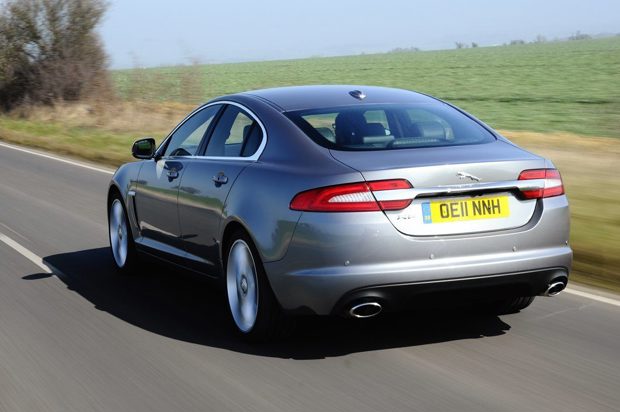
Date: 16 July 2012 | Current mileage: 10725 | Claimed economy: 44.8mpg | Actual economy: 37.0mpg
With an on the road price of £51,020 our XF could hardly be called cheap as a new buy but for the money it does feel like an extremely well equipped and luxury car. It has around £6000 worth of options fitted to it which certainly isn't out of the ordinary for someone buying a top of the range XF Portfolio. So what do you get for your money?
Well the most expensive option on our XF is Adaptive Cruise Control with Intelligent Emergency Brake and active Seat Belts which cost £1275. This uses a radar in the front bumper (you can see it just below the number plate) which monitors the traffic ahead. Once you've set your cruise speed it will maintain that speed unless it senses a slower car in front. It will then slow you down to maintain a constant distance (which you can alter) and once the road is clear again, will accelerate back up to the pre-set speed. The Intelligent Emergency Brake uses the same radar and if it senses that a collision is imminent, will prepare the brakes to minimise the speed of the impact.
It's an extremely clever system, almost futuristic in that the car pretty much drives itself aside from the steering. Putting your trust in a system at motorway speeds does take a leap of faith at first, but once you've got used to how it works, it makes long journeys far more relaxing. Unfortunately it also highlights how bad other people's driving can be, especially when it comes to judging the speed of a car approaching from behind on a motorway or and dual carriageway.
I've driven a few cars with adaptive cruise control - in fact the first time I ever tried it out was on a Jaguar S-Type. The Jaguar system has certainly advanced since then when it used to race up behind cars before braking hard. Then once it was clear, would accelerate at what seemed like maximum throttle back up to speed. Not exactly relaxing...
It's now far more refined. However it's still not as good as the system in the Audi A6 I ran previously. The Jaguar system can caught out in bends, thinking that a car or HGV in the inside lane is in fact in front of you. And when a slower vehicle in front has moved over, the Jaguar system takes its time in deciding to accelerate, whereas the Audi cruise control is quicker to react, feeling more like a real persons driving style.
Don't get me wrong. The Jaguar adaptive cruise control does work well and with all the motorway driving I do, I use it a lot, yet I still think there's room for improvement, especially when it has a price tag of £1275.
Alongside this our XF also has the Blind Spot Monitor at £460. These system are becoming more common as they're a huge safety aid, especially on larger cars like the XF. Again this uses a radar to detect any vehicles that you won’t be able to see in your blindspot. If there is something there, an orange symbol is illuminated in the mirror itself (in the picture below it's getting confused by a barrier on the M4).
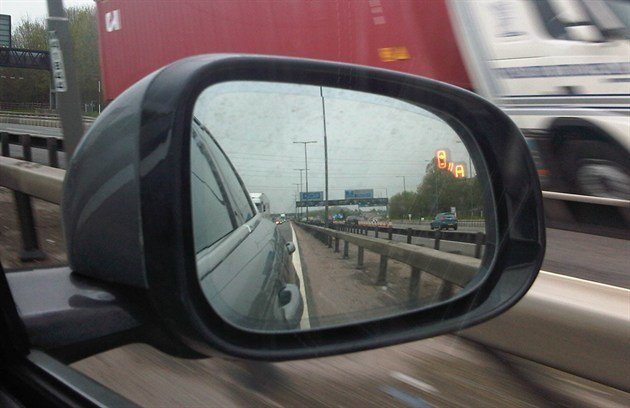
To be honest, on the motorway I rarely rely on it. When I learnt to drive I was always taught to use my mirrors pretty much constantly on the motorway so I always know what's there - and what isn't. A lot of my driving is on the A1 around Lincolnshire and Rutland where there are some rather choice slip roads. Most are short and join from wide angles so it's not easy to see what's approaching.
In my opinion it's here that the system is most useful as it means I don't have to try and check my blindspot while quickly running out of slip road. It's also useful in London traffic as it's advanced enough to detect cyclists or mopeds that are on your inside. There have been a few times when it's saved me from coming uncomfortable close to an unsuspecting cyclist.
On a more selfish front, the £240 Heated Steering Wheel is my favourite extra for sheer opulance. It hasn't been cold enough to truly enjoy it - I must be the only person waiting for winter - but there have been a few wet and windy days recently which have given me a chance to use it. It does give the XF a truly luxury feel and and along with the heated and ventilated leather seats which are standard on the Portfolio trim, makes the XF feel a cut above other large saloons.
Our XF has DAB digital radio fitted which was a £300 option but it's now standard fit on the Portfolion trim which is good to see. The switch to digital radio may still be some way off but I still think that DAB should be standard on a car at this level.
If you want to build your own XF and look at the various options available you can go to the car configurator on Jaguar's website. Just be prepared to waste several hours....
Time for the XF's first service
Having covered almost 12,000 miles in just over 12 months our Jaguar is due it first service so it's booked into the local dealer.
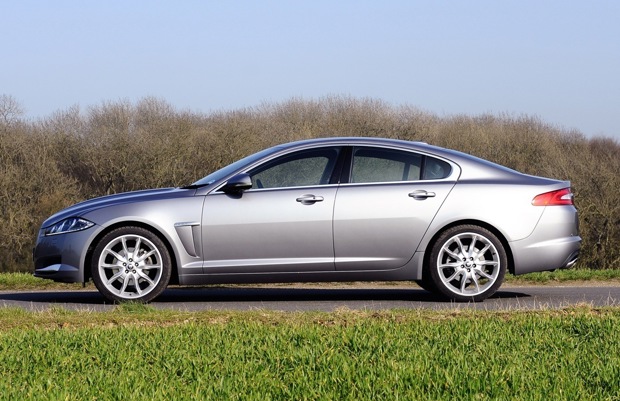
Date: 31 July 2012 | Current mileage: 11949 | Claimed economy: 44.8mpg | Actual economy: 37.3mpg
Our Jaguar has been racking up the miles recently so it was no surprise when the onboard display flashed up warning that the first service was due. The XF has done almost 12,000 miles now although the majority of that is on the motorway or in traffic so it's not under too much stress most of the time.
However one issue that seems to be getting worse is the brake shudder when slowing down from high speeds. It also happens under hard braking and then gets progressively worse. So if I decide to drive 'enthusiastically' on a few country lanes, it very quickly becomes a problem. So much so that I end up trying to avoid hard braking by changing down through the gears, which hardly does the engine any good as it's pushed to high revs.
Of course it's easy to simply not drive fast on twisty roads (even if it is dull) but it's harder to avoid braking from high speeds For example stopping at roundabouts on dual carriageways or slowing down when exiting a motorway or A-road onto a slip road - especially a short one. I thought that perhaps the problem was uneven brake wear on the pads or perhaps even wear on the discs. After all, our car came to us with 7500 miles on the clock and it's difficult to know exactly how hard it was driven before.
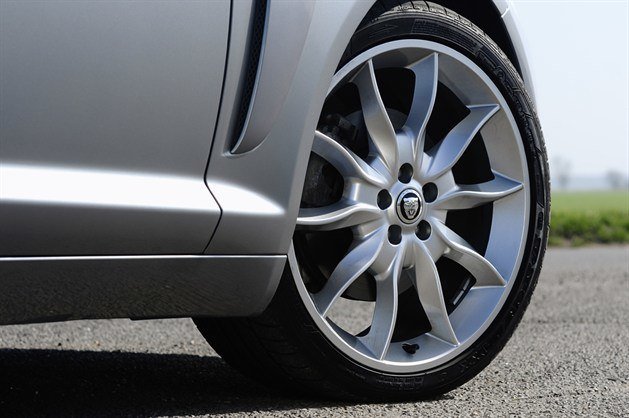
Fortunately this is the only issue with the Jaguar. There was one occassion where it wouldn't detect the key but after locking the car and unlocking it a few times, it worked itself out. Another small thing I've noticed in the recent hot weather is that the touchscreen seems slow and unresponsive in high temperatures.
So back to the first service. The Jaguar was booked in at Stratstone in Milton Keynes for a straightforward service and hopefully they would solve the brake vibration too. The dealership itself is very smart although not quite up to Audi or Lexus standards when it comes to design. It does feel a little ordinary but the impressive customer service more than makes up for it.
Saying that, I had been offered a courtesy car for the day while the XF was being serviced but due to another customer not returning it I ended up waiting. To be fair to the man I dealt with there, he was very apologetic and promised to get the service done quickly. So I quite happily sat with a cup of coffee and watched BBC Breakfast.
An hour and a half later it was all done with no issues. They'd changed the oil and also gave the car a 'health check'. It sounds a bit of a gimmick but usefully this includes a report which tells you how much wear is left on the tyres, brake pads and if there are any current or possible problems with the rest of the car, everything from wheel bearings and the alternator to the battery condition. Our XF got all green dots which means it passed with flying colours.
There was no solution to the brake problem though. The vehicle technicians did apparently test it from 70mph but reported that it was all okay. And the health check showed even brake pad and disc wear. It's the same story with the tyres which still have between 4mm and 5mm tread left. So i'm none the wiser and the problem still persists. The dealership suggested having the wheels balanced but the fact it only vibrates under braking makes me think it's something else.
The dealership did offer to wash the XF but having had to wait there already I didn't have time so it had to come home still dirty. A quick trip to the local hand wash a few days later saw it back to its pristine best. In total the service cost £323. The service itself is £130 before things such as the Castrol oil which costs an eye watering £95.55. That's the price you pay for it being from a dealership.
The service could hardly be called cheap, but the cost is on par with other premium cars and I can't fault the dealership for customer service, despite the persisting brake issue. I may look into getting the wheels balanced as at least it will eliminate that as a possible fault, but it seems a frustratingly long process to solve what seems a straightforward issue.
Summer finally arrives
As we finally get some hot weather I'm stuck behind the wheel of the XF but it does mean I get to enjoy the ventilated seats.
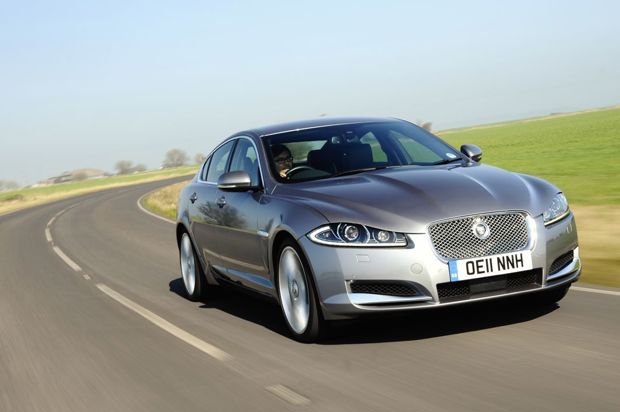
Date: 20 August 2012 | Current mileage: 13002 | Claimed economy: 44.8mpg | Actual economy: 36.7mpg
So it seems summer is finally here. For a day or two at least. But rather than enjoying the sun like any right minded person I've ended up sitting behind the wheel of the XF on busy motorways, which isn't my idea of fun. The good news is that the cabin of the XF is a pretty good place to be when you're covering long (and dull) distances, even when it is hot.
I've actually been waiting for some really hot weather so I can test out the ventilated seats on the XF - one of my favourite truly unneccesary but luxury-esque features. Our XF may be the top Portfolio model but it's still impressive that it gets both cooled and heated front seats a standard. On most other cars this size you'd expect cooled seats to be an option.
So are they any good? Well you can definitely hear them working, with the sound of the air pushing through the small perforated holes. It's not loud but at first I did wonder what the noise was as the rest of the XF is so quiet. You can either have both the seat base and back working, or just the back (but not the base on its own) and there are three levels - low, medium and high.
The system works independently from the air conditioning and you don't even need the a/c on for the seats to either heat or cool. It only takes about 20 seconds to feel the effects, especially from the base, but it's most useful for your back on particularly hot and sticky days. It's especially effective at the lower part of the seat back and gets pretty cold very quickly. It's lovely when you get into a very hot XF to be able to have the seats cooling down in less than a minute.
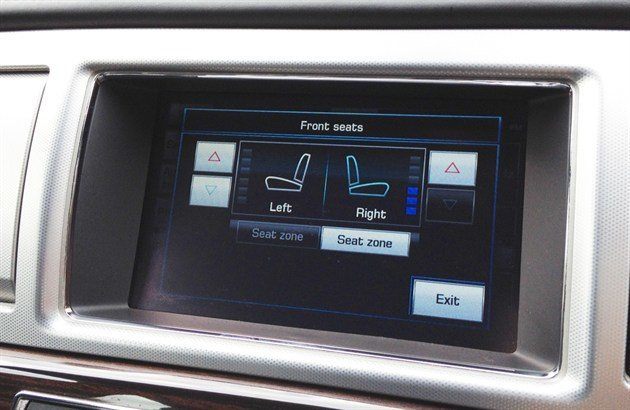
I've heard of a few people having issues with the ventilated seats on the XF, with some saying they don't feel particularly effective or cool. I have to say there are no such problems with our car and if anything I pretty quickly have to turn them down to the middle setting as they get a bit too cold. Of course when winter comes they'll prove just as effective at heating up, using the same ventilated system but with hot air.
I've never really bothered with cooled seats before, thinking of them more of a gimmick than anything useful. But in the XF I've found them so useful in hot weather, especially the humid and hot conditions we tend to get in the UK. They are a lovely bit of a luxury and another element that makes the XF feel like such a special car.
And talking of the seats, they are just one of the many highlights of the XF. The strike the perfect balance between comfort and support, which is especially noticeable on long journeys. Even after three or four hours behind the wheel of the XF I ever have any aches or pains. There's plenty of adjustment which helps, including a really good lumbar support.
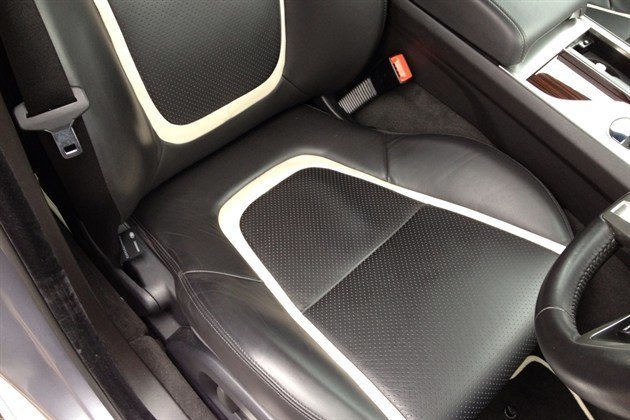
Back to the motorway...
After our short summer break it's back to work for both me and the XF. Which means more motorway miles and a chance to improve the fuel economy.
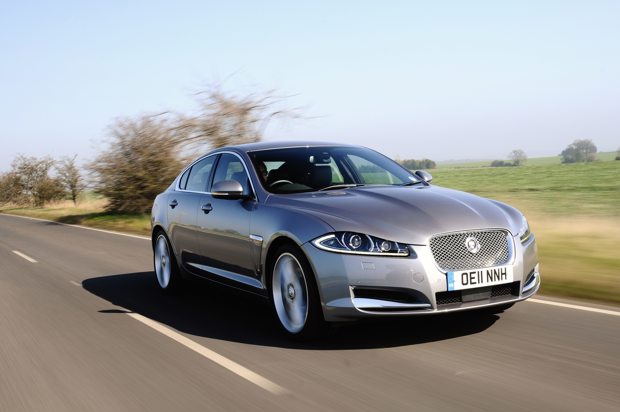
Date: 31 August 2012 | Current mileage: 13882 | Claimed economy: 44.8mpg | Actual economy: 38.0mpg
August is always a quiet time in the motoring industry. As the factories in Spain and France shut down for a month, so things slow down here with fewer new car launches. Although with the Paris Motor Show just around the corner at the end of September, it's never that quiet. But as the end of the month comes round all too quick, it's back to work once more, for both me and the Jaguar.
And as usual we're back on the motorway, heading round the country or down to Heathrow. Plus the occasional trip to London. All those miles, mainly on the M1 and M25, are rarely interesting and often disrupted with traffic jams. A recent few hours trying to get through the Dartford Tunnel was a particular highlight. The reason? Seemingly nothing when I got through it. Not even a broken down van.
All these miles have managed to give me a chance to improve economy in the XF. Not that it was poor before - up till now we've been averaging between 36mpg and 37mpg which isn't too bad against the claimed average of 44.8mpg.
Users are on Real MPG are seeing an average of 34.8mpg although interestingly owners of the more powerful 3.0 D S model are actually seeing slightly better figures of 35.2mpg. So our XF is comparing well, especially considering the XF covers a fair amount of rural driving in Rutland and Leicestershire. The most frugal XF is the new 2.2 D model - an engine shared with the Land Rover Freelander. It offers decent power but the real appeal is the official economy of 55.4mpg. However, on Real MPG our users are only seeing an average of 39.2mpg - disappointingly short.
But back to our XF. The 3.0 D engine has now covered almost 14,000 miles so it's well run in now. It's wonderfully powerful thanks to all that 500Nm of torque and the V6 sounds good too, albeit a little gruff compared to other V6 diesels. But on the motorway, it just eases along, barely breaking a sweat at not much more than 2000rpm.
This has been a real advantage for economy too. With a bit of gentle driving and resisting too much right foot, I've seen economy climb to 38.0mpg in the last few weeks. That's not over the top economy driving and nothing like the M25 Challenge I did in our Volkswagen Polo BlueMotion last year. Instead it's just being a bit more aware of gently accelerating and braking. This more 'relaxed' style of driving isn't always easy, especially when you're on the motorway with an impatient van driver a few inches from your rear bumper, but it pays dividends when it comes to saving fuel.
The XF has a 69.5 litre tank. I'm not sure why it's such an strange number either. But it does mean that the XF isn't cheap to fill up when it gets down to close to empty. With diesel hovering around the £1.40 a litre mark I regularly see fuel bills of £70 to £80 a time when filling up the XF. With our XF currently averaging 38mpg it has a range of 580 miles but with all those trips to Heathrow and back, a tank of diesel quickly goes down.
A touch of screen annoyance
The XF comes with Jaguar's touchscreen system which controls most things on board. It sounds good in theory but can be frustrating to use.
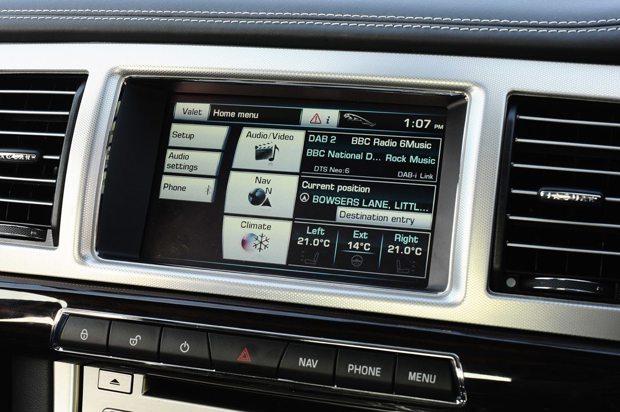
Date: 16 September 2012 | Current mileage: 14446 | Claimed economy: 44.8mpg | Actual economy: 37.8mpg
I was lucky enough to go on the launch of the XF in 2008. It marked a huge turning point for Jaguar after the S-Type in every area. But I remember being hugely impressed by the interior. It was such a leap forward for Jaguar in both design and technology. The biggest highlight was the standard sat nav and colour touchscreen which controls the radio, media and climate control.
This system made it's way onto all Jaguar and Land Rover products, including the latest Range Rover - a car that starts at more than £70k. For this you'd want a top end system but the Jaguar/Land Rover touchscreen control isn't always the best.
Don't get me wrong. It's far better than many out there and obviously it depends on what you're used to. If you've driven an Audi for years then the Jaguar system will take some getting used to and vice versa. But for a luxury car, I think it should be better. While the layout is good, as you can see above, it's not especially touch sensitive, so you end up having to tap two or three times to get things to work. A quick tap doesn't work.
I thought this was maybe just our XF so I gave the screen a good clean but it remained as unresponsive. I've driven another XF recently and that was the same. I've already mentioned in a previous update how it goes very slow in hot temperatures. It's started to do the same thing first thing in the morning. Which is very frustrating if you're trying to set the sat nav before heading off.
The sat nav itself is good though and more often than not gets the best route. Like most systems it gives you three different routes so you can choose between a fastest or shortest. And the map is clear too. Personally I prefer the equivalent BMW sat nav system though. The map is sharper and the system is simpler to use. Having to enter an address using the touchscreen sounds like it would be easy, but if you're driving along (and especially if it's an uneven road) it can be tricky. Using a dial, like BMWs iDrive or the Audi MMI system, is easier.
Of course there are standard controls in the XF. The climate control temperature and fan speed can be changed by buttons while the stereo volume has an old school dial (and a control on the steering wheel). My only gripe is that whatever changes you make pop up on the screen, in front of what you're looking at. So if you're trying to set the sat nav and then turn the stereo down, you have to wait for the volume display to disappear from the screen.
What I do love about the system is how intuitive it is to use. There are no hidden menus or strange icons, instead everything is clear and simple. The iPod connection is great too and playing music through the touchscreen syste works really well. If you have lots of songs on your iPod you'll now how frustrating it is scrolling through if you decide you want to listen to something way down the alphabet (let's say Frank Zappa. Or Yazz). It's easy on an iPod thanks to the click wheel but on most car systems you're left having to scroll down through every one. The Jaguar system lets you scroll one by one or a page at a time, so you can whip through lists quickly.
Aside from that the XF continues to go alone nicely. It's remaining pretty economical for a 3.0-litre diesel with an average of almost 38mpg with motorway miles passing by effortlessly. There have been several trips into central London recently and the XF is just as at home here, although there was a recent close call with a foreign-registered HGV which almost took the front off at a tight junction. Thankfully that sharp nose of the XF wasn't damaged.
Diesel downsizing in the XF
Until recently the XF came with big V6 or V8 engines but with fuel economy becoming increasingly crucial, Jaguar has introduced a 2.2-litre four-cylinder diesel.
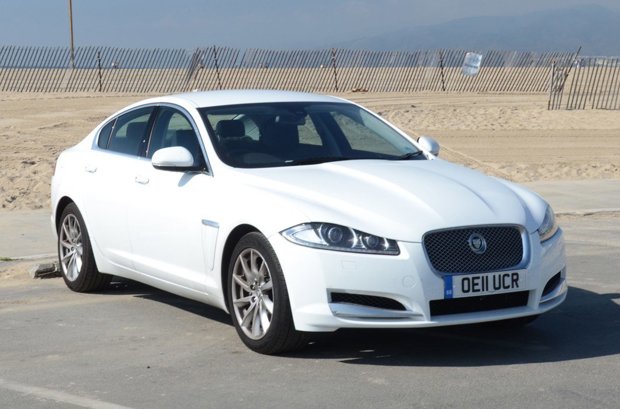
Date: 28 September 2012 | Current mileage: 15220 | Claimed economy: 44.8mpg | Actual economy: 36.3mpg
People from Jaguar are never too keen to talk about the X-Type, their rival to the BMW 3 Series. It seems that for many it represented a low point for a brand associated with luxury and performance. I remember at the launch of the XF in 2008 how the marketing spiel was very much focussed on the future rather than the past. And that future was about powerful engines and high quality cars. Not the X-Type.
But with the car market more competitive than ever, even Jaguar isn't immune from downsizing especially given the importance of company car fleets when it comes to profits. Thankfully the brand has stayed true to its words and not come out with a replacement for the X-Type. But it has taken the step of fitting a smaller and more economical diesel in the XF.
The 2.2-litre diesel is the same engine that's used in the Land Rover Freelander and it suits the 4x4 very well. Originally it has 190PS but it was recently uprated to 200PS along with 450Nm of torque. So it should be ideal in the XF as en entry-level engine. Our 3.0-litre diesel only has 50PS and 50Nm more So the big question is does it work in the Jag?
Well yes and no. The good news is that it doesn't look much different from larger engined XFs. In fact the only tell tale sign is a single oval exhaust at the back rather than the dual exhausts. It's different when you press the engine start button though. The engine is noisy and coarse compared to the super smooth 3.0-litre diesel in our car. Obviously this is going to be the case as it's a four-cylinder rather than a V6, but it's not as quiet as other similar size diesels from rival manufacturers.
Then there's the performance. It's fairly lacklustre and seems hampered by the eight-speed gearbox which is constantly busy, trying to select the best gear. While the ZF automatic works well with the big V6 diesel, it's not suited to the smaller 2.2 D. There is in fact an even lower powered version of the 2.2 D with 163PS. This is very much a company car choice with a price tag of less than £30k.
The gearbox often kicks down when you'd expect it to let the engine pull from low revs using the available torque. This means high revs and the accompanying noise which isn't pleasant. It's much happier on the motorway at a gentle cruise, but more often than not you find yourself having to work the engine hard which doesn't go with the relaxed nature of the XF.
The big benefits should come in economy. The 2.2 D returns a claimed 55.4mpg while CO2 emissions of 135g/km put it in band E currently £120 a year. However, on Real MPG owners have been seeing an average of 39.8mpg – some way off. However it's important to note that the orignal 190PS version of the engine was less economical (52.3mpg) and had higher CO2 (149g/km). In comparison our 3.0 D has an official economy figure of 44.8mpg and we've been seeing around 37mpg.
I was quite disappointed with the 2.2 D XF and not just because I've been driving a 3.0 D version. It's simply not as good to drive as a BMW 520d while an Audi A6 2.0 TDI feels more sprightly. In contrast the 2.2 D seems like the poor relation in the XF family. While the 3.0 D is more expensive it feels far more like an XF should. It's well worth the extra £3000.
It's goodbye to our impressive XF
Six months with our Jaguar XF has flown by and after almost 10,000 miles we're saying a sad goodbye to the luxury saloon.
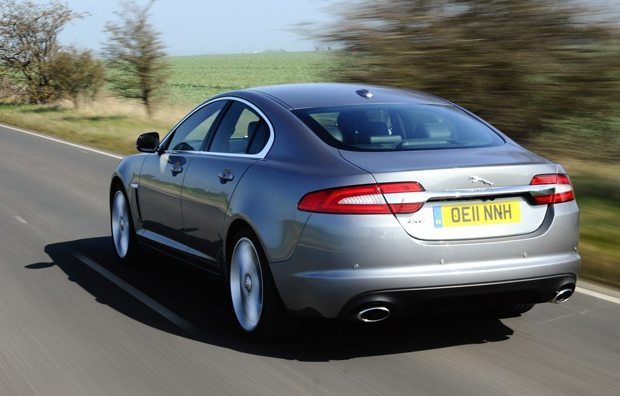
Date: 19 November 2012 | Current mileage: 17018 | Claimed economy: 44.8mpg | Actual economy: 37.8mpg
Amazingly it's been six months since our shiny Jaguar XF arrived. Following on from the superb Audi A6 I ran beforehand, the XF had a tough act to follow - I was mightily impressed driving the big 3.0 TDI Audi and have to admit that the slightly more 'gentlemanly' image of the XF didn't quite have the same appeal as a bit of Vorsprung Durch Technik.
But the XF has won me over. It's a car I've come to really appreciate and love, thanks in a big part to its sense of Britishness. It has an air of class about it that you don't find in anything else. even if it has a Mercedes-Benz or BMW badge on the bonnet. In my opinion it's a cut above its German rivals and you certainly get a more friendly respect on the roads. In the A6 people weren't exactly falling over themselves to let me out of junctions but in the XF people seem to be more patient, even in London.
That's not to say it's better than the competition. A 5 Series is more enjoyable to drive with nicer steering and the Audi A6 comes with quattro four-wheel drive which gives you that extra security that a rear-wheel drive car can never match, despite all the stability and traction control systems. But there's something about the XF which makes you feel special when you're behind the wheel - and that's a rare thing in modern cars.
The interior is a real highlight and considering the amount of time I spent in the XF on long journeys and motorways I got to see a LOT of it. Okay so the touchscreen isn't the best, especially compared to the BMW or Audi equivalent and yes sometimes the car wouldn't detect the keyless key so I could actually start the thing, but those gripes aside the quality and style of the interior, with its high gloss wood and big chrome gear lever dial, feels truly luxury.
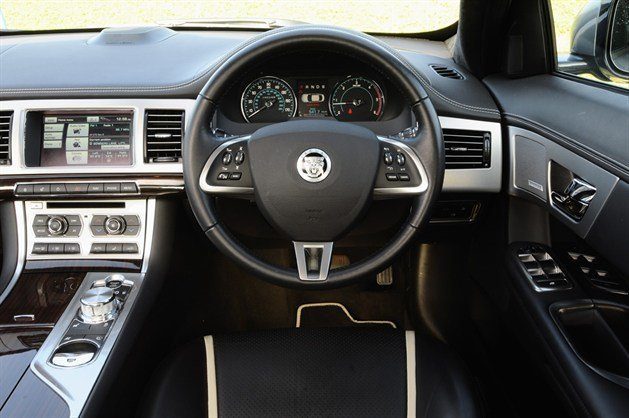
Our top of the range Portfolio model was pretty much fully kitted out and came complete with both heated and ventilated seats which were useful if a little odd, when the weather was hot all those months ago. I'm not sure anyone driving an XF should really be wearing shorts, but the cooling function was surprisingly good. After all sweaty legs and leather seats are never a good combination unless you like that sort of thing.
At 18 months old and having covered 17,000 miles our XF still feels like a new car. Aside from the odd keyless problem the only issue we've encountered has been the brake shudder which was never fully resolved. We've heard from other XF owners so we know it's not an isolated incident with our car. It just means I had to try and be a little more gentle on the brakes which was no bad thing.
That aside the 3.0-litre diesel never missed a beat and - if anything - just got better and better the more I drove it. That 500Nm of torque meant superb in gear performance and although the engine could be a little gruff at high revs, more so than the Audi 3.0 TDI, it was effortless quick and worked well with the eight-speed automatic. The gearbox is so good I only ever used the paddleshifts to change gear myself once. In standard D mode it more than manages well by itself.
The one thing that surprised me with our XF was the ride. I expected it to be much softer than it was. In fact it was even firmer than the A6 which was an S line model on big 20-inch alloys with low profile tyres. Admittedly our XF has equally large wheels but given Jaguar's reputation for making big 'wafty' saloons I wouldn't for a second have imagined it would be firmer than the Audi.
But that doesn't detract from the overall quality of the XF. It's still amazingly refined and quiet especially on the motorway. I've spent many an hour behind the wheel of the XF everywhere from the traffic of central London to the bliss of the Brecon Beacons and I've loved every minute of it. I'm sad to see it go.
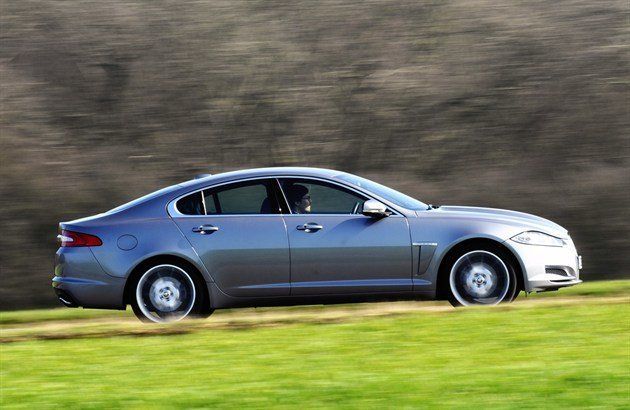
An image problem?
The facelifted XF may look sharper than before but Jaguar still suffers from an image problem that often sees it labelled as an 'old man's car'.
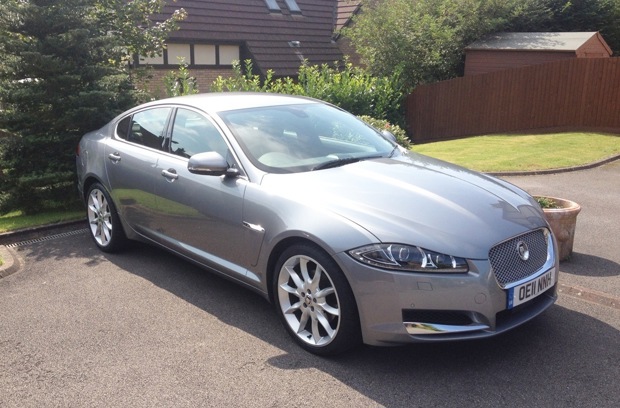
Date: 30 October 2012 | Current mileage: 16026 | Claimed economy: 44.8mpg | Actual economy: 38.3mpg
Jaguar may have a reputation for luxury and performance but when it comes to image the British brand has always been associated with the more 'mature' owner. And Arthur Daley. It wasn't always that way though. The E-Type is, for many, the pinnacle of British sports cars and the villains in The Sweeney always drove MkII Jags. Athough so did Inspector Morse and my dad for a brief period in the early 1970s.
But for many the archetypal Jaguar is the XJ6 from the 70s and 80s. When I was growing up it was the ultimate in posh motors. There was a lad at my school whose dad owned one - needless to say we were all very envious. It's still a great looking car and one I often have hankering for now, despite the inevitable running costs and sky high fuel consumption. In fact as we speak I'm trawling eBay.
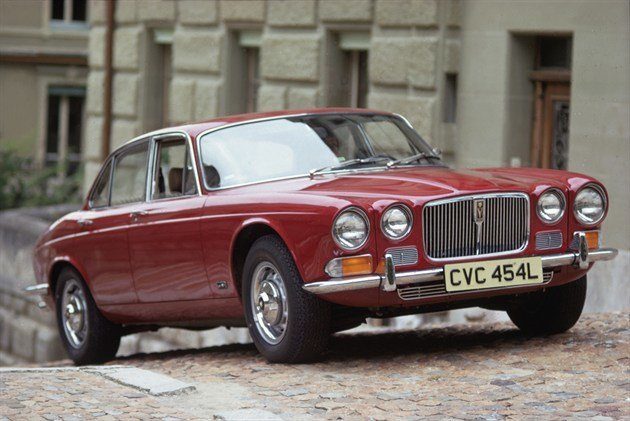
Of course the XJ6 was an expensive car and attracted a particular sort of buyer. Usually a bank manager or successful business man. It's very much a cigar and elbow patch motor. And it's that image which most people still associate with Jaguars. As I've found with my XF. Plenty of my friends commented when I switched from the Audi A6 to the Jaguar XF that I was getting old before my time. Indeed the Jag is a car that seems to suit my dad better than me.
I won't hear a bad word against the XF. I love our Jaguar and think the sharper and aggressive look the facelift brought, particularly at the front, gives it a more modern edge than the previous rounded styling. It also brings it into line with the current XJ. But then again it's not really the styling that's the issue here, it's the brand image.
Line a Jaguar XF, Audi A6, Mercedes-Benz E-Class and BMW 5 Series up alongside each other and ask 100 randomly chosen people to pick their favourite in terms of styling and you'd probably get an even split among the four. You could take the badges off but seeing as pretty much everyone knows what they all look like that would be pointless.
But ask the same people which brand they thought was the most 'on trend' at the moment and they'd gravitate towards BMW or Audi. The two German marques tend to be associated with quality and success but most importantly they are brands that attract younger buyers - the 30 and 40 somethings for whom having a premium German car represents what they've achieved.
Personally I prefer the Jaguar image. It's slightly more classy than the others and considering I'm 34 years old, it's not the kind of car people expect someone of my age to drive. I like the fact it's a little different from the norm. Plus Jaguar is a company that's going places. Next year will see the launch of the gorgeous F-Type - a two-seater sports car that will be the most desirable car of 2013. If that doesn't change the image of Jag then nothing will.
